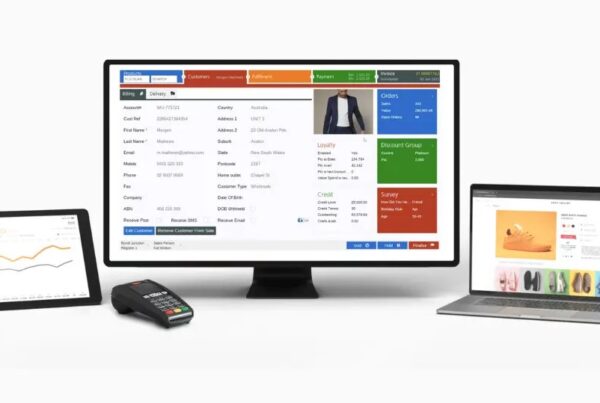When you place an order with your suppliers or manufacturers, they may require a minimum order quantity (MOQ) to ensure your commitment to a certain order value. Understanding what is MOQ and how it works is important, especially for low-margin or highly customized businesses. The right MOQ setup will help your business be more cost-effective in production and create profits. In this article, we’ll explore the MOQ definition, its benefits, how you can calculate it, and the proven tips to boost your MOQs.
What does MOQ mean?

MOQ stands for minimum order quantity, which is the lowest number of units that you must purchase from a supplier each time. Suppliers set MOQs to leave out orders that cause wasted resources but bring low value or profit. It means that the suppliers may turn away customers who are unwilling to meet the MOQ.
MOQ setup can be based on the number of products or the total order value. Take this minimum order quantity example: you buy T-shirts from your vendors with an MOQ of 30 units per order and each T-shirt costs $10. This means you have to purchase a minimum of $300 on T-shirts per order.
The minimum order quantity varies a lot for different products. Items that have lower production costs are likely to have a bigger MOQ than items that are pricey to produce.
Why is MOQ important?

MOQs help you keep a healthy profit margin, improve inventory control procedures, and reduce purchasing costs. Let’s take a look at its benefits:
Benefits for manufacturers and suppliers
- Improve cash flow: MOQs take into account the entire cost of inventory and any fixed cost before attaining the desired profit level. If suppliers can manage their minimum order quantity well, they will have a healthier and more predictable cash flow.
- Lower inventory expenses: Some suppliers only produce goods when they receive an order that meets their MOQ. This means they don’t have to keep stock hanging idly in the warehouse, reducing costs for storage and saving warehouse space.
- Enhance profit margins: Minimum quantity orders are the safety net for profit margins. With MOQs, suppliers will know if an order is worth the production costs. Therefore, they ensure the goods are only manufactured when a customer is ready to purchase a certain product quantity.
Benefits for buyers and retailers
- Save cost with bulk purchases: If you manage a retail store and buy products from vendors who apply MOQs, you’re more likely to get the best price per item. Bulk purchases help you save costs and earn more profit on each unit sold.
- Foster relationships with suppliers: The relationship with your supplier is important for you to get the best prices and collaborate with them in the long term. If your ideal purchase quantity is smaller than their MOQ, try to negotiate with them to reach a solution, such as splitting orders with other buyers.
How MOQ impacts inventory?

Minimum order amounts can strongly influence both the sellers and buyers. If a seller applies a high MOQ, they have to produce and store a larger quantity of goods, which impacts their warehouse and stock management.
For buyers, they have to decide if they should purchase products in the minimum quantity, or if they should look for another vendor with a smaller MOQ. Buyers also need to think about inventory storage options like warehouse space and potential savings like bulk orders.
Here are the pros and cons of high and low MOQ.
High minimum order quantity
With a high MOQ, suppliers need to keep a large amount of finished inventory to fulfill orders anytime. Big inventory value requires more working capital and takes up more storage space. However, they also lower administrative costs because customers will order less frequently, thus saving time and effort to fulfill many orders.
In contrast, if vendors want to maintain a low stock level by using just-in-time inventory management, it will cause them longer lead times to fulfill orders.
Buyers also benefit from bulk savings and lower the risk of stockout for their supply chain. On the other hand, they need to consider their sales performance to avoid overstocking, especially for products that have a short lifespan such as electronics.
Low minimum order quantity
A low minimum quantity order doesn’t require suppliers to store extensive inventory on hand, since they will handle a lower average order size. This means less inventory with a higher stock turnover rate and minimizing unnecessary holding costs.
However, low MOQs can add more administrative tasks as your team needs to manage more customers with more frequent ordering. In addition, while a low minimum order amount can reduce the risk of product obsolescence, it also raises the risk of stockouts.
2 key factors impacting MOQ

Now you’ve known MOQ meaning, its benefits, and how it affects your inventory, let’s look at the 2 primary factors of MOQs: raw materials and order volume.
Raw materials
Suppliers need to purchase MOQs from factories that make the raw materials, just like retailers buying finished products from suppliers and wholesalers. However, these factories rarely store inventory. Instead, they only produce the raw materials when they receive orders with the minimum order quantities.
Different types of products have a different shelf life. For example, when setting up an MOQ for food products and other perishable goods, you must consider how long these goods can last before getting spoiled. For electronics or other durable products, their lifespan should be anticipated as well. They may become outdated or less desirable when new products are released.
Order volume
Order volume is the center of minimum order quantity. You must find the break-even point when an order will begin to generate profit.
Before creating MOQs, you should think about who will buy your products, and whom you want to sell to. For instance, if your main customer base is small merchants, the MOQ will likely be much lower than if your buyers are large retail chains.
Furthermore, the product pricing must be adjusted to reflect the MOQs, such as a higher price for a lower MOQ to ensure a profitable return. In contrast, if you sell low-margin or big-volume goods, you’ll need a high minimum order amount to break even.
How to calculate MOQ?

There are many variables when it comes to calculating minimum order quantities. Fluctuations in the prices of raw materials require suppliers to adjust their MOQs accordingly. Therefore, suppliers need various parameters to determine the point that an MOQ guarantees money. The same applies all the way down to wholesalers and retailers in the supply chain. Here are the 4 steps to follow in your MOQ calculations.
Identify demand
Whether you’re a supplier or a merchant, inventory forecasting is vital for your business. You need to think about the product type, seasonality, competition, new trends, and other factors to determine how many units you will sell. Then, you can make informed decisions for your next orders. The more accurate the prediction is, the better chance you can match supply and demand and avoid overstock and understock problems.
In addition, you should calculate your lead time to get the stock ready to ship, freight transit duration, warehouse receiving with a 3PL or 4PL provider, and other potential delays. Planning for different scenarios helps you prepare well if you need to order inventory sooner than anticipated.
Measure holding costs
Depending on product types and their storage requirements, the costs to keep goods will vary. For example, refrigerators will incur energy costs, or big-sized items will take up more space.
Despite the difference, all suppliers want to move inventory as fast as possible, as their bottom line will benefit from a quicker turnover. Therefore, remember this factor when you deal for MOQs.
Find your break-even point

Knowing your break-even point is crucial to calculate minimum quantity orders. This is the point that your revenue from product sales is equal to business expenses, including all direct and indirect costs. In the MOQ formula, you need to consider the number of items you must sell to break even and make profits afterward.
For example, you are a supplier of T-shirts with the following data:
Your average cost is $300 per day for labor, rent, storage cost, and customer acquisition costs. The cost for raw materials and production of T-shirts is $4 each, and the price for each T-shirt is $10.
Let X be the number of T-shirts you have to sell per day to break even. You then take an equivalent equation for your revenue and costs as follows: 10*X = 300 + 4*X 🡺 X = 50
It means you have to sell 50 T-shirts per day to break even.
Set your minimum order quantity
After determining demand, calculating carrying costs, and finding the break-even point, it’s time to set your minimum order amount for each product type.
Continuing with the previous example of T-shirts, on average it takes 3 days to fulfill an order and you can handle 4 orders at the same time.
Your MOQ is the result of the equation: 4*MOQ/3 = 50 🡺 MOQ = 37,5
It means you can set 38 units as your minimum order quantity for T-shirts per order.
In short, the equation for MOQ is:
MOQ = Break-even point/The number of orders you can handle per day.
7 tips for optimizing MOQ

MOQs bring value to various parties: manufacturers, suppliers, wholesalers, and sometimes retailers if your brand can apply MOQs through distribution partnerships. Regardless of your position, here are 7 best practices to implement minimum order quantities:
Tips for manufacturers and wholesalers
Encourage higher-value orders
You can motivate your customers to spend more by using some incentives such as discounts for multiple units or bundle pricing to increase average order values. Offering a lower unit price if customers buy more is an efficient way to move inventory faster, while customers are also happy to get a good deal.
If you’re a wholesaler that provides goods to retailers, you can establish an MOQ based on tiers for style or collection. For example, purchasing 10 pairs of shoes at $50 each, 20 pairs of shoes at $48 each, and 30 pairs of shoes at $46 each. Retailers can buy more units to reduce the cost per item and increase their margins.
In addition, you can devise your pricing structure by volume or cost. For low-cost items, you need a higher minimum quantity order to ensure profit. For higher-cost products, a lower MOQ is more suitable, since the products are already expensive. This strategy will help you make a profit no matter the quantities you sell.
Tips for retailers
Boost inventory turnover
From the retailer’s perspective, placing a large purchase order can save you the cost of goods sold, but can increase the cost of storage. To minimize that, you need a higher inventory turnover ratio. Since you invested more cash upfront, you have to sell your inventory faster to free up cash flow.
To boost your stock turnover, seek different approaches to attract and retain customers. Flash sales, loyalty programs, discounts for introducing friends, etc. are a few ideas.
Remove slow-moving SKUs from your shelf
For small retailers, meeting big minimum order quantities can be a financial pressure. You don’t want to spend too much for stock that isn’t selling well but wasting warehousing fees. Holding on to inventory for too long will eat into your profits.
Therefore, have regular reviews to spot which products are bestsellers and which ones are hanging in the warehouse for too long. Get rid of the worst-performing SKUs and save money to manage a few products that bring good earnings. You can run a promotion to push sales for the idle stock, and eliminate these items from your order next time.
Offer free shipping thresholds

When you apply free shipping thresholds, you offer a free delivery after a customer spends a certain amount on your products. Here are some ideas to conduct this approach:
- Develop a promotional program such as “Spend $100 to get free shipping”;
- Use freeship incentives to convert visitors into first-time customers;
- Charge shipping fees until the buyer reaches a certain spending value, and reward them with free shipping on the next order.
- These tactics for free shipping thresholds can help you boost sales and encourage customers to meet your minimum quantity orders.
Strengthen supplier relationships
When you buy raw materials or goods from your suppliers, try to negotiate to get the best price for the required MOQs. The deal will have a higher chance of success if you have a strong relationship with the suppliers over time. To do that, you must bring value to them and create a win-win collaboration:
- You show the manufacturer or supplier your vision and get their support.
- Your business keeps growing and selling more products.
- Your supplier is happy as they can make more money with your growth.
- You pay them on time and purchase more goods from them.
Over time, they are willing to offer better terms and be more flexible in doing business with you.
You can implement software to effectively manage suppliers and purchase orders. The system provides you a single view of your SKUs and vendor data, automate PO processing, and plan your purchasing with demand forecasting, thus streamlining your procurement.
Search for other suppliers or distributors
If your supplier sticks to a high MOQ that cannot be negotiated, consider switching to another trading company or wholesale distributor. They are the middlemen who purchase in bulk from a manufacturer and resell smaller quantities to others.
This way, you can reduce the upfront investment and optimize your stock replenishment plan. Otherwise, accepting a higher MOQ than your selling capacity will hurt you with extensive carrying costs and obsolete goods that cannot be recovered.
Pro tip: whatever your role in the supply chain, you should consider using inventory management software to better control your MOQ.

Adopting a digital solution to control minimum quantity order is an essential method. Inventory management software like Magestore offers you powerful features to control your stock, warehouse, supplier, and sales data in real time. It has an analytics dashboard that calculates key metrics and visualizes data for your ERP and supply chain, so that you know what to improve.
The system helps you calculate the costs of goods sold, forecast inventory, control order fulfillment, measure holding costs, and stock turnover rate. These are important inputs to set suitable MOQs for your products. Since the software increases the visibility of MOQs for your team, they can better understand what is MOQ and persuade customers to meet the minimum order quantities.
With Magestore solution, you can get an understanding of your inventory, such as:
- View your historical stock levels at a specific time and location;
- The quantity of an SKU and how many days you have until it runs out;
- By when you need to restock a product;
- The sales frequency of each product across channels;
- How a promotion affects your existing inventory levels;
- Which items are your bestsellers and which items have low sales but high storage costs;
- Your average storage cost per unit of a product type;
- The number of shelves and pallets you’re charged;
- How product demand changes compared to previous periods;
- How seasonality impacts your revenue;
- Etc.
Applying the above 7 tips will help you set up your MOQ right and generate benefits from it. A good system will help you collect trustworthy data to make important decisions for your MOQs and business management – the crucial aspects regardless of your role in the supply chain.
FAQs
1. What does MOQ mean in Alibaba?
Minimum order quantity (MOQ) is the lowest number of items that a wholesale supplier requires buyers to purchase per order. It ensures an order is profitably-worth for the supplier.
2. What are FOB and MOQ?
MOQ is established by the supplier to weep out low-value orders that take time to fulfill.
On the other hand, FOB stands for free on board, a term in logistics responsibility, where the seller delivers the package on a ship, and the transportation risk is passed to the buyer.
3. What are the differences between MOQ vs EOQ?
MOQ is the minimum order quantity set by a manufacturer or supplier. In contrast, EOQ stands for economic order quantity, which refers to the optimal number of a product that you should order to meet customer demand while minimizing storage and ordering costs.













